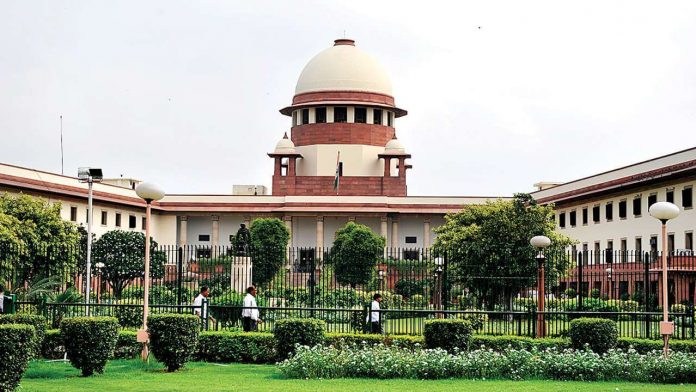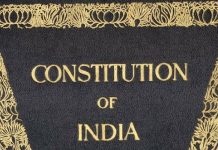This article has been written by Sai Manoj Reddy. L pursuing a Certificate Course in Arbitration: Strategy, Procedure and Drafting from LawSikho.
Table of Contents
Introduction
India has been trying to become a hub for International Commercial Arbitration to attract more foreign business and grow the economy of the country. To that effect the Government has been making a lot of amendments to the Arbitration and Conciliation Act, 1996 and the Judiciary is also working to achieve that through various judgments which highlight the principles of party autonomy, minimal judicial intervention, and speedy resolution of disputes as to the foundation pillars of the arbitration regime in India. The bigger picture in making amendments and pronouncing judgments is to change the way commercial disputes are being resolved in India. We all know that it takes a long time for any dispute to be resolved in India through the court proceedings due to many reasons like too many pending cases, lengthy and outdated procedures, etc. Even the laws of India regarding the resolution of disputes are very old which were created during the colonial era and it is high time they need a complete revamp to suit the present-day business world.
In consonance with the said foundation pillars, a three-judge bench of the Supreme Court of India in Bhaven Construction vs. Executive Engineer Sardar Sarovar Narmada Nigam Ltd. has affirmed the statutory policy behind the arbitration in India and taking the legislative intention into account observed that the power of High Courts’ under Articles 226 and 227 of the Constitution of India (from here on referred to as “Constitution”), in interfering with the arbitral proceedings may be exercised only in rare cases and used the term ‘exceptional rarity’ in the judgment. Further, the Supreme Court has Clarified the term ‘exceptional rarity and pointed out that such interference by the High Courts’ under Articles 226 and 227 should be done only in cases wherein a party is left completely remediless under the Arbitration and Conciliation Act, 1996 (from here on referred to as “Arbitration Act”) or a clear bad faith is shown by another party.
The factual background of the case
In February 1991 the Executive Engineer Sardar Sarovar Narmada Nigam Limited (from here on referred to as “EE”) had entered into a contract with Bhaven Construction (from here on referred to as “BHC”) for manufacturing and supplying bricks to the EE. The Contract entered into by the parties contained an arbitration clause i.e., Clause 38, that has a specified procedure for appointment of a sole arbitrator when a dispute arises.
After a few years disputes arose between the parties regarding the payments related to the manufacture and supply of bricks as agreed in the contract. Accordingly, BHC has invoked the arbitration clause under the Contract by issuing a notice dated November 13, 1998, to the EE seeking the appointment of a sole arbitrator. EE has replied to the said notice and rejected all the averments based on the two grounds which are firstly, that all the disputes between the parties have to be adjudicated as per the Gujarat Public Works Contracts Disputes Arbitration Tribunal Act, 1992 (from here on referred to as “Gujarat Act”) as any disputes related to a “works contract” in the state of Gujarat has to be decided in accordance with the provisions of the Gujarat Act and Secondly, that the arbitration was time-barred as per the clause 38 of the contract and the appointment of an arbitrator has to be done within 30 days and if not done the dispute resolution clause becomes defunct and the other party cannot refer the dispute to arbitration under clause 38.
Following this BHC has appointed the sole arbitrator (Respondent No.2 in the current case), for adjudication of the disputes between the parties. Aggrieved by this EE has filed an application before the arbitral tribunal under Section 16 of the Arbitration Act, disputing the jurisdiction of the sole arbitrator in adjudicating the present dispute which falls under the ambit of Gujarat Act. The sole arbitrator Vide his order dated October 20, 2001, has rejected the Section 16 Application filed by the EE stating that the arbitral tribunal has jurisdiction to adjudicate this dispute as per clause 38 of the contract and the Arbitration Act.
Aggrieved by the above decision of the sole arbitrator EE has approached the Hon’ble High Court of Gujarat under Articles 226 and 227 of the Constitution before a single judge. This application was dismissed by the single-judge bench of the Gujarat High Court and it was held that a petition under Articles 226 and 227 of the Constitution against the order of sole arbitrator underSsection 16 of the Arbitration Act is not maintainable and the only remedy available to the EE is to challenge the same under section 34 and 37 of the Arbitration Act.
Following that the EE has filed a letters patent appeal before a division bench of the Gujarat High Court which was allowed and the division bench has held that since the contract entered into between the parties falls within the definition of “works contract” as mentioned in the Gujarat Act and the EE has challenged the jurisdiction of the sole arbitrator at the earliest chance available to him which was rejected and it would be unfair on the part of the BHC to say that the EE has to wait till the arbitral proceedings are over to challenge the award under section 34 of the Arbitration Act and it would be unfair to permit the continuance of arbitration proceedings.
Aggrieved by the above order of the division bench, BHC has approached the Supreme Court of India by filing a special leave petition and contended that the arbitral award passed by the sole arbitrator was already challenged under section 34 of the Arbitration Act by EE and now invoking the inherent powers of the High Court under Articles 226 and 227 of Constitution was nothing but an attempt by the EE to bypass the statutory framework of the Arbitration Act.
The primary issue before the Court was whether the arbitral process could be interfered with under Article 226/ 227 of the Constitution, and under what circumstances.
Main arguments of the parties
The counsel for BHC has argued that the division bench of the Gujarat High Court has erred in allowing the letters patent appeal by the EE and interfering with the order of the Single Judge Bench. Further, the counsel has pointed out that the EE has already challenged the arbitral award passed by the single arbitrator under Section 34 of the Arbitration Act and that clearly shows the attempt of EE to bypass the procedural framework laid down under the Arbitration Act. The counsel has further pointed out that the single arbitrator has jurisdiction under Section 16(2) to pass an order on the jurisdiction of the arbitral tribunal and the same can only be challenged under Section 34 of the Arbitration Act.
On the other hand, the counsel for the EE has contended that as the Gujarat Act has come into force all the disputes related to the ‘works contracts’ have to be adjudicated in accordance with the provisions of the Gujarat Act and the applicability of the Arbitration Act will not come into the picture. He further contended that it was always open to a party to invoke writ jurisdiction under Articles 226 and 227 of the Constitution to set aside an arbitration which was a nullity as it conflicted with the enactment of the State.
The judgment
The Supreme Court has allowed the appeal by the BHC and set aside the impugned order passed by the Division Bench of the Bombay High Court. The Supreme Court while deciding the matter also held that the sole arbitrator was appointed in accordance with Clause 38 of the contract and the Court also considered the fact that EE did not take any legal recourse against the appointment of the sole arbitrator at the earliest instance and rather he chose to submit before the arbitral tribunal to adjudicate the issue on jurisdiction under section 16(2) of the Arbitration Act. At this juncture, the Supreme Court held that the Arbitration Act through section 16 conferred sufficient authority on the arbitral tribunal to decide jurisdictional issues. Further, the Supreme Court has referred to the case of Deep Industries vs. ONGC Ltd. and held that dismissal of the application under section 16 of the Arbitration Act challenging the jurisdiction of the arbitral tribunal is not remedying less but a sufficient opportunity is given to the aggrieved party to challenge the same under section 34 of the Arbitration Act. The Supreme Court also held that as there are sufficient remedies available to the EE under Arbitration Act it is not permissible to challenge the same under Articles 226 and 227 of the Constitution.
 How did the Supreme Court reach such a judgment?
How did the Supreme Court reach such a judgment?
Firstly, the Supreme Court has observed that the Arbitration Act is a code in itself that contains detailed procedures for all legal issues ranging from the validity of the arbitration agreement, the jurisdiction of the tribunal, challenging the award passed, and even the enforcement of the arbitral award leaving no scope for additional judicial interference into the process of arbitration. The Supreme Court also observed the non-obstante clause provided under Section 5 of the Arbitration Act and held that the intention of the legislature is to adopt the UNCITRAL Model Law and rules and to reduce the judicial intervention into the arbitration process.
Secondly, the Supreme Court has observed that there is a clear procedure established under the Arbitration Act to challenge the jurisdiction of the arbitral tribunal where the arbitrator will hear at the first instance followed by the challenge of the order of arbitrator under section 34 before the Courts. The Supreme Court also highlighted that the opening phrase of Section 34 read as ‘Recourse to a Court against an arbitral award may be made only by an application for setting aside such award in accordance with subsection (2) and sub-section (3).’ The Supreme Court emphasized that the use of the term ‘only’ as occurring under the provision served two purposes namely (a) making the enactment a complete code, and (b) laying down the procedure.
Thirdly, the Supreme Court in deciding the question of the constitutional right under Articles 226 and 227 has held that is it a settled position of law under judgment in Nivedeta Sharma vs. Cellular Operators Association of India that when there a statutory provision of redressal of issues the High Courts’ should not entertain writ petitions by completely ignoring the statutory provisions. The court also held that the non-obstante clause on section 5 does not affect a constitutional right to move to High Courts but it cautiously remarked that if petitions under Articles 226 and 227 are allowed to be filed challenging the arbitral proceedings then the whole process of arbitration will be of no use and it will be completely derailed with excessive judicial intervention.
Lastly, the Supreme Court based on a recent judgment in P. Radha Bai vs P. Ashok Kumar has contemplated on the principle of unbreakability in the arbitration proceedings where the whole proceedings work on strict timelines provided in the Arbitration Act and held that these are hallmarks of the efficient arbitration system and any additional interference with this well-oiled mechanism will lead to undesirable results and it is not permissible.
Conclusion
This decision of the Supreme Court shows how serious the judiciary is in creating an environment for speedy dispute resolution and minimal judicial intervention. It drifts away from the unnecessary interventionist attitude of the Indian Courts and leads the way for a policy that is at par with the international norms. The Supreme Court in this case made it clear that the parties have to resolve the issue/grievances within the contours of the Arbitration Act and not to approach the Courts unless they are left completely remedial or if there is an element of bad faith is involved. The Supreme Court has also cleverly observed the ramifications of excessive judicial intervention to the process of arbitration and upheld the infallibility of the Arbitration Act. It is clearly seen in the Judgment that the Supreme Court has ticked all the right boxes and this can be a landmark judgment for making India a favorable jurisdiction for the resolution of disputes by people or businesses all over the world.
Students of Lawsikho courses regularly produce writing assignments and work on practical exercises as a part of their coursework and develop themselves in real-life practical skills.
LawSikho has created a telegram group for exchanging legal knowledge, referrals, and various opportunities. You can click on this link and join:
 Serato DJ Crack 2025Serato DJ PRO Crack
Serato DJ Crack 2025Serato DJ PRO Crack










 Allow notifications
Allow notifications



